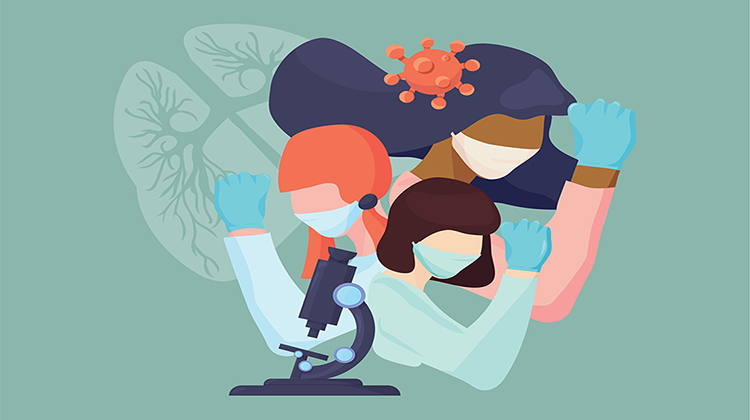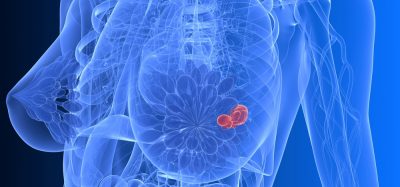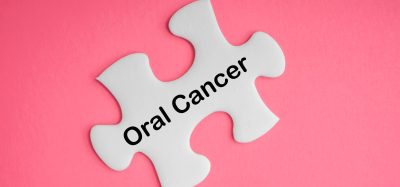Women in STEM with Gilda Ascione
Posted: 1 October 2024 | Gilda Ascione (Daiichi Sankyo Italy) | No comments yet
Curiosity about the functioning of the human body and a genuine desire to benefit others drew Gilda Ascione into the world of medicine. Here, Dr Ascione, Medical Director Oncology at Daiichi Sankyo Italy, reveals the reality of being a female in STEM and why following your passion is always worthwhile.


Can you tell us about your journey in the field of STEM and the challenges you encountered along the way?
Since I was a child, I always wanted to be a doctor. From a scientific point of view, I liked the possibility of studying and learning about the human body, its vital functions, how it gets sick, and how to treat it. From a human point of view, I have always considered doctors’ work as a sort of mission for the good of others. Of course, it is not a simple job with many years spent studying at university, including specialisation, but above all, the greatest challenge I have experienced has been dealing with patient suffering. Being a doctor means giving courage and hope day in, day out to those experiencing illness. Following clinical practice, I transitioned to the world of pharmaceutical companies which also had its challenges as I had to learn everything from scratch and use my experience and knowledge differently. But we women know how to apply our talent to difficult situations and turn our diversity into a strength.
What inspired you to pursue a career in STEM, and how did you overcome any obstacles or biases you may have faced?
What has always inspired me in my work, both as a clinical oncologist and as a company manager, is the possibility of helping thousands of patients gain access to the best therapeutic option: this has always pushed me to do my best and has also given me the courage to face the prejudices I encountered when I was the youngest female resident on my course. In clinical practice, there were patients who clearly would have preferred to be treated by more ‘experienced’ male colleagues and I found similar biases when I decided to pursue a career in pharma. Indeed, I’m afraid to say I experienced some biases regarding my lack of experience when I joined my first company, especially from non-medical colleagues who saw me as an internal competitor. However, the passion and humility with which I approached the new job – alongside my aptitude for teamwork – helped me gain my colleagues’ trust and ensure that they recognised my previous work experience as an added value, rather than a threat to their careers.
Could you share an example of a specific project or research that you have worked on and the impact it has had in your field?
At the beginning of my career, during my scholarship, I worked for two years at a research institute where I set up a research project focused on the study of metronomic oral therapies for patients with metastatic breast cancer (BC). The publication of the final results of the study made it possible to define, within the therapeutic algorithm of these patients, a new schedule that used a low-dose oral therapy, which delivered a significant reduction in side effects while maintaining the best efficacy. That paper, of which I was in the authorship, remains a current point of reference for that therapy usage.
Biomarkers are redefining how precision therapies are discovered, validated and delivered.
This exclusive expert-led report reveals how leading teams are using biomarker science to drive faster insights, cleaner data and more targeted treatments – from discovery to diagnostics.
Inside the report:
- How leading organisations are reshaping strategy with biomarker-led approaches
- Better tools for real-time decision-making – turning complex data into faster insights
- Global standardisation and assay sensitivity – what it takes to scale across networks
Discover how biomarker science is addressing the biggest hurdles in drug discovery, translational research and precision medicine – access your free copy today
How has your research in STEM contributed to advancements or improvements in your field, and what potential future applications or implications do you foresee based on your work?
Oncology has come a long way in recent years. The possibility of using new technologies to build new, more effective and less toxic therapies has opened new horizons for the treatment of cancer. The projects we have been working on in recent years will certainly have important implications in the near future, not only with regard to creating new curative therapies for some cancers, but also through new partnerships with institutions and decision makers, helping to accelerate access to these therapies for those patients who most need them. I am particularly proud of working in oncology, contributing to improving the outcome for women with metastatic BC. I am sure new therapies will positively affect women around the world and will hopefully inspire more women to get involved in science and technology.
As a woman in STEM, what unique perspectives or strengths do you believe you bring to your work?
In my daily work, the quality that I try to bring to my team is trust, because I think it’s crucial in our work. Each of the people I work with knows they have my total trust; they know they must act for the best and they know they can also make mistakes. All of us can learn from mistakes and I am always ready to take responsibility for their mistakes when I know that decisions are made in good faith.
Another essential strength I try to share with all my collaborators is the passion for our work. I have worked in hospitals for many years and have always been committed to treating my patients in body and spirit with passion and enthusiasm. Today, in the research environment, I try to use the same qualities of trust, integrity, and the desire to help on a larger scale with the hope that this work impacts many more people positively, even if I do not get to meet each patient individually.
This commitment to integrity and doing things in the right way gives me the energy to keep moving forwards.
What advice would you give to young women who are considering a career in STEM but may be hesitant due to societal stereotypes or perceived challenges?
What I would tell them is to think bigger. Never stop at appearances and stereotypes; women must have self-confidence and boldly face life’s challenges. In fact, experiencing our own strengths allows us to prepare for something bigger. We women have ability, potential and perseverance but sometimes we forget to put them at the service of ourselves before serving others. What I am always saying is that a bit of healthy selfishness is an essential part of achieving both personal success and worthwhile advancement for society.
How do you see the representation of women in STEM changing over the years, and what further progress do you believe is needed?
I believe there have been many steps forward in terms of women in STEM but much remains to be done, especially in European countries such as Italy. Some time ago I discovered that there is a United Nations World Day to celebrate Women in STEM. In my opinion, the need to celebrate it highlights what any woman and scientist knows very well: there are not enough women in science yet. This is certainly not because women are less prepared – quite the opposite in fact – but because there is strong gender discrimination that relegates girls and women to second-rate players. This means that we still have a lot to work on and as women, we must support each other and act as role models so that the new generations can continue the work that has already been done.
In your opinion, what can organisations and institutions do to create a more inclusive and supportive environment for women pursuing STEM careers?
Gender equality, even in science, is crucial. Considering the Italian landscape, for example, it is my opinion that resources allocated by the National Recovery and Resilience Plan (PNRR) for gender equality represent a unique opportunity to aspire to achieve the sustainable development objectives set out in the 2030 Agenda. To break down these inequalities, it is essential to review training plans, increase investments, and encourage participation in the scientific world, where girls can and must make a difference.
Looking ahead, what exciting developments or advancements do you foresee in your field of STEM, and how do you envision your own research contributing to those future innovations?
As a Medical Director with broad experience in clinical practice, I am deeply convinced that in pharma companies Medical Affairs will be a strategic leader at the centre of clinical development, identifying and addressing unmet patients, payers and policymakers’ needs that advance clinical practice and improve patient outcomes. My daily work is focused on building an innovative Medical Affairs department that will be at the centre of societal issues such as access, health equity, outcomes and patient-centric care. By and large, we are scientific experts trained to communicate and collaborate with other scientific experts and HCPs; however, benefitting society in a health ecosystem saturated with misinformation will require Medical Affairs to speak a new language through new channels to outcompete misinformation with trusted science and counter misunderstanding with clear understandable information.
Moreover, increasing treatment complexity will require more sophisticated scientific exchange. To ensure that society benefits from personalised medicine, Medical Affairs must develop and communicate a scientific narrative such that the value of the technology is understood and can be applied to the appropriate population or individual. I am really proud to say that in my company we all have the mission to serve our patients using our innovative technology to build transformative drugs with the aim not only to treat but to cure every patient affected by oncological diseases in the near future.
About the author
Dr Gilda Ascione, Medical Director Oncology, Daiichi Sankyo Italy


Related topics
Oncology
Related organisations
Daiichi Sankyo Italy
Related people
Gilda Ascione (Daiichi Sankyo Italy)







